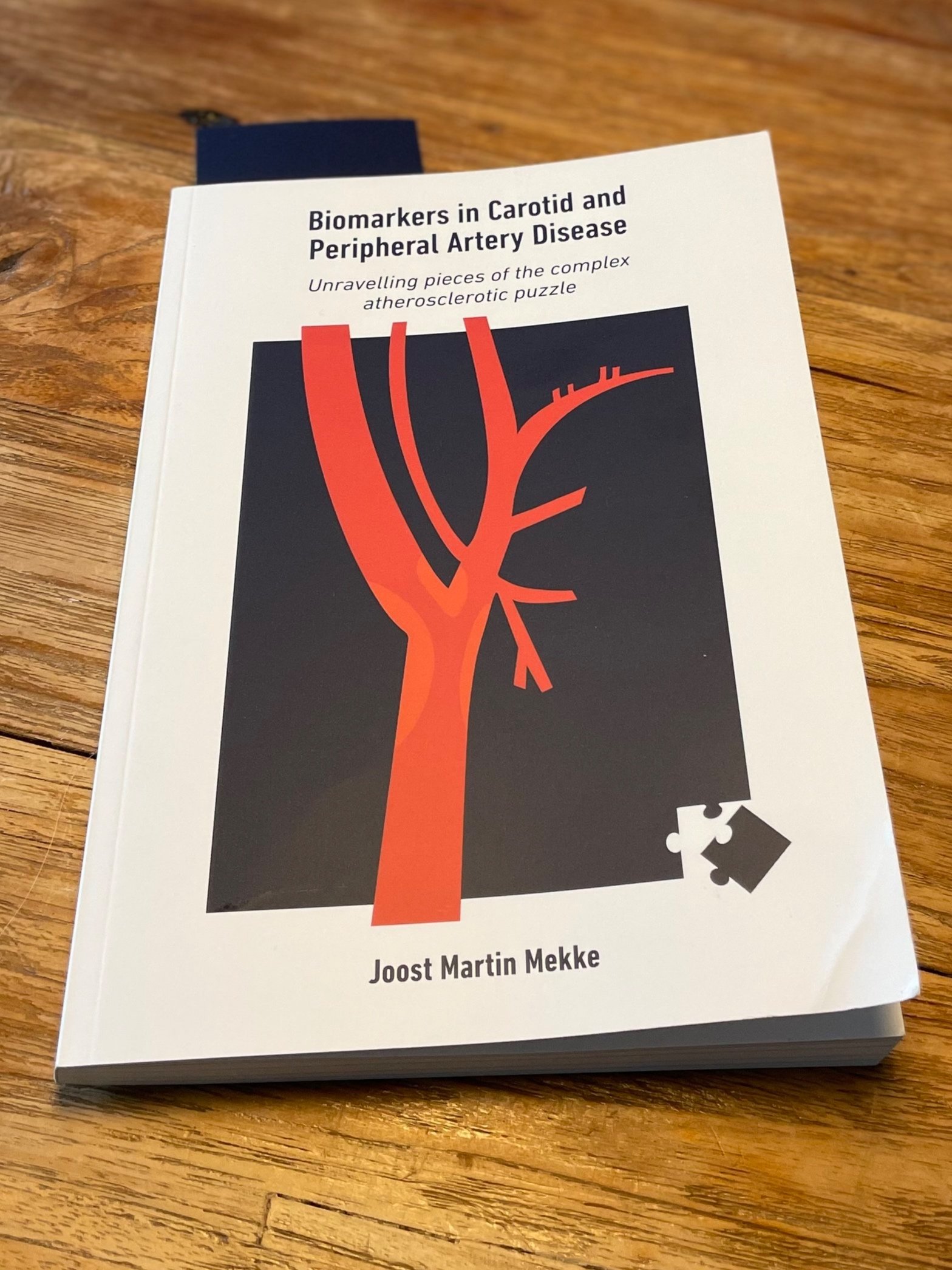dr. Joost Mekke
The ink is dry.
Joost Mekke is now a doctor in philosophy in the field of medicine.
Yesterday was the day: our PhD candidate Joost Mekke defended his thesis entitled Biomarkers in Carotid and Peripheral Artery Disease. His research explores how specific biomarkers in the body can help predict the risk of heart and vascular complications after surgeries on the carotid (neck) and femoral (groin) arteries. The goal? To find reliable indicators that improve risk assessment for patients.
The first part of his thesis focused on plaques—fatty deposits that clog arteries. Researchers discovered that high levels of mast cells in plaques indicate instability. In men, the buildup of red blood cells (identified using Glycophorin C) was linked to a higher risk of stroke before surgery.
The second part examined patients undergoing carotid artery surgery. Tiny particles in the blood, called extracellular vesicles, were found to be strong predictors of complications. Another key finding: the enzyme lipoprotein lipase (LPL) increased short-term risk but seemed protective in the long run. Additionally, simple blood cell characteristics (RDW, MCV, and neutrophil size) turned out to be surprisingly powerful risk indicators.
The final part looked at patients with peripheral artery disease undergoing femoral artery surgery. Two proteins, CD14 and Serpin G1, were linked to overall cardiovascular risk, while Serpin G1 and lipoprotein(a) were associated with limb complications.
These findings highlight potential biomarkers that could lead to better risk assessment and more personalized treatments for vascular patients. However, many questions remain to be examined. These markers warrent further study to understand their role in disease processes. . This knowledge could help doctors predict complications more accurately and develop more personalized treatments, ultimately improving patient outcomes. On a deeper level it is unclear whether mast cells are uniformly distributed through a plaque - probably not - and whether the distribution may be compounded by the blood flow over the plaque and through the arteries. It is also unknown how exactly mast cells are involved in the formation of intraplaque blood vessels and what role they may play in the deposition of Glycophorin C or plaque bleeding in general.
Joost displayed a clear understanding of the field in which he positioned his work, and confidently debated and discussed the questions raised by the opponents. As a member of his supervisory commission I am proud of his work, his dillegence and perseverance. As I eluded to in my Laudatio he showed grit, an eagerness to learn, and an ability to balance hard work with an appreciation of the pleasures in life.

